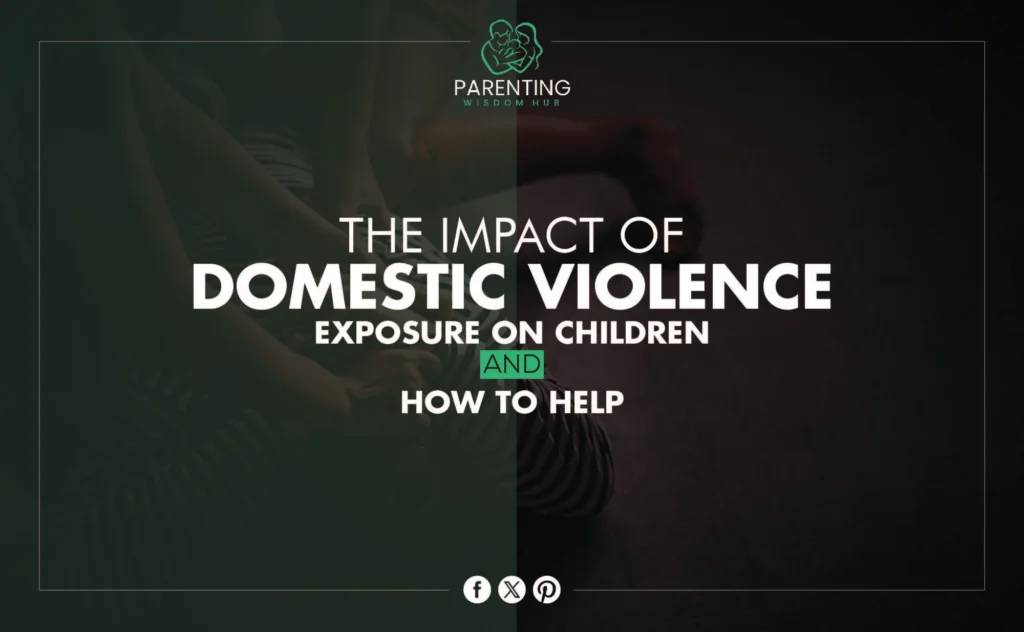Introduction
The silent epidemic of domestic violence impacts millions of households worldwide. One in three women worldwide has suffered intimate partner abuse or non-partner sexual violence, according to the WHO. The effects on children in these circumstances can be severe.
Domestic violence is any relationship conduct those harms someone physically, psychologically, or emotionally. Physical abuse, emotional manipulation, verbal threats, and financial control are examples. While the primary victims—usually adults—are typically the emphasis, children who watch or live in such circumstances are deeply affected.
Understanding the effects of domestic abuse on children is essential for supporting victims and preventing generational violence. This blog post discusses the psychological and emotional impact of domestic abuse on children, symptoms of exposure, and ways to help them heal and grow.
What is Domestic Violence?
Any abuse or violent behavior in a relationship that hurts, scares, or controls the partner is considered domestic violence. This kind of abuse can come in many ways, such as:
- Physical Abuse: Hitting, kicking, choking, or using weapons are all examples of violent acts that hurt other people. This kind of abuse is often the most obvious because it can cause injuries that range from small scrapes and bruises to significant wounds that could kill the victim.
- Emotional Abuse: Instilling dread, guilt, or insecurity by manipulation, threats, and psychology. Isolation from friends and family, frequent criticism, and gaslighting can destroy the victim’s self-esteem and sense of reality.
- Verbal Abuse: Using insults, insulting statements, and threats to demean, denigrate, or manipulate a partner. Verbal abuse can relentlessly assault the victim’s character, appearance, or abilities, leaving lasting emotional wounds that may not be visible.
- Financial Abuse: The restriction or manipulation of financial resources limits the victim’s independence and capacity to flee the abusive circumstances. This includes controlling the victim’s money, withholding bank account access, undermining their work, stopping them from getting an education, and trapping them in a relationship.
Domestic violence is alarming worldwide. About one in three women experience intimate relationship physical or sexual assault, according to the WHO. Cultural and societal factors may keep this rate higher in some cultures.
How Children are Exposed to Domestic Violence
There are several ways for children to be introduced to domestic violence:
- Direct Exposure: This happens when kids see violent acts occur, like when they see a parent getting hit or yelled at. Seeing these things can be very upsetting, and the effects can last long.
- Indirect Exposure: Without seeing the violence, youngsters may overhear discussions, threats, or incidents. They may also see parent injuries or mental distress.
- Living in a Violent Environment: Living in a violent household is poisonous, even without direct or indirect exposure to specific occurrences. The worry and tension of knowing violence can happen at any time can significantly impair a child’s security and well-being.
Living in these kinds of places can be just as bad for kids as being exposed to them directly because they take in fear and insecurity and have a lot of emotional and mental problems as a result.
The Psychological and Emotional Impact on Children
Short-term Effects
When children are exposed to domestic violence, they often have several short-term mental and emotional effects, such as:
- Anxiety, Fear, and Confusion: Children who see violence or live in a hostile environment may feel continually on edge, causing anxiety, worry, and bewilderment. They may wonder why violence is happening and feel helpless to stop it.
- Behavioral Changes: Domestic violence trauma can cause significant behavioral changes. Some children may act aggressively after witnessing violence. Others may become silent and isolated to cope with dread. Sleep disruptions like nightmares or sleeplessness are prevalent because children feel unsafe.
- Impact on School Performance and Social Relationships: Trauma from domestic violence typically affects a child’s education. Poor school achievement may result from concentration issues. The youngster may retreat from classmates due to fear and perplexity or act out aggressively, making it hard to make and keep friends.
Long-term Effects
Children can be profoundly and permanently affected by the mental and emotional effects of domestic abuse that last for a long time:
- Increased Risk of Developing Mental Health Issues: Domestically abused children are more likely to develop mental health concerns like PTSD, sadness, and anxiety. Their quality of life may be affected by these conditions into maturity.
- Long-term Impact on Self-esteem and Personal Relationships: Violence can severely impair a child’s self-esteem. They may blame themselves for the violence and feel undeserving of love and respect. This can make it hard for them to build healthy relationships later in life due to trust and intimacy issues.
- Potential for Perpetuating the Cycle of Violence in Adulthood: Domestically abused children may repeat the cycle as adults, which is concerning. Boys who witness fathers abusing mothers may harm themselves. Girls may also think relationship abuse is standard, making them more vulnerable.
Being exposed to domestic abuse can leave mental and emotional scars that last a lifetime. This shows how important it is to get early help and intervention to break the cycle and help children heal.
Recognizing Signs of Domestic Violence Exposure in Children
Behavioral Indicators
Children who are exposed to domestic violence show certain behaviors that could mean they are upset:
- Aggression or Violence Toward Peers or Pets: Increased aggressiveness is a common symptom. Children may act out what they see by hurting peers or pets. They use aggression to convey their perplexity, rage and fear they cannot communicate.
- Regression in Behavior: Children can relapse to outgrown behaviors after domestic violence. This could happen even if they’ve outgrown bedwetting, thumb-sucking, and clinging to caretakers. These acts frequently indicate that the youngster seeks comfort in a hazardous circumstance.
- Hypervigilance or Excessive Fearfulness: Children in violent circumstances may develop hypervigilance, a condition of constant attention and anticipation of danger. This might cause jumpiness, a severely startled response, or overwhelming dread of events or individuals, especially those that remind them of violence they’ve experienced.
Emotional and Social Indicators
Besides changes in behavior, kids who are exposed to domestic violence may also show social and mental signs that something is wrong:
- Difficulty Forming or Maintaining Friendships: Children who grow up in violent homes may struggle to trust and build connections. They may struggle to make friends or avoid social situations to avoid being wounded or rejected.
- Excessive Guilt, Shame, or a Desire to Protect the Abusive Parent: Children may blame themselves for the violence and feel guilty or ashamed. They may also need to defend the abusive parent to prevent additional violence or because they love them. This might cause severe emotional issues that the child cannot handle alone.
- Reluctance to Go Home or Expressing Fear of a Parent or Guardian: A child who refuses to go home or fears a parent or guardian is exposed to domestic abuse. They may stay at school longer, see friends more, or find other strategies to avoid risky places. When questioned, individuals may fear or be concerned about what awaits them at home, indicating a severe problem.
These symptoms are essential for early intervention and assistance of domestic violence-affected children. By recognizing these signs, caregivers, educators, and professionals can safeguard and heal these youngsters.
How to Help Children Exposed to Domestic Violence
Immediate Steps
When a kid sees domestic violence, it’s important to act right away to protect their safety and health:
- Ensuring the Child’s Safety: If you fear domestic abuse is endangering a child, protect them first. Remove the youngster from the setting and locate a safe location if feasible. If you cannot interfere, call local authorities to protect the youngster.
- Reporting and Seeking Help: Report child safety threats to child protective services or the police. Help is also available from domestic violence support groups. These groups can help the child, and their non-abusive caregivers navigate the issue and secure their safety with resources, legal advice, and counseling.
Long-term Support
Long-term support is significant for helping kids heal from the trauma of domestic violence:
- The Role of Counseling and Therapy in Recovery: Children need professional counseling and therapy to process and heal. Trauma-informed therapists can help children express their feelings, overcome anxieties, and learn healthy coping skills. Deep-seated emotional and psychological impacts of domestic violence may require long-term rehabilitation.
- How Schools and Community Programs Can Support Affected Children: Domestic violence-exposed children need schools and community activities. Teachers and community leaders may learn to spot trauma and support students. Mentorship, tutoring, and extracurricular activities can help youngsters gain confidence, social skills, and normalcy despite family upheaval.
- The Importance of Stable, Nurturing Environments for Healing: A stable, supportive environment is essential for domestic violence survivors’ children to recover. They may live with a non-abusive family member or in a safe foster home. A constant schedule and emotional support from caring people might help the youngster feel secure and rebuild trust.
Empowering the Child and Caregivers
Empowering both the child and their caregivers is key to overcoming the effects of domestic violence:
- Teaching Coping Mechanisms and Resilience-Building Techniques: Child victims of domestic violence need emotional and stress management skills. Teaching kids resilience-building skills like mindfulness, deep breathing, and positive self-talk can help them manage challenging emotions and anxiety. Building resilience takes time and will assist them throughout adulthood.
- Providing Resources and Education for Non-abusive Caregivers on How to Support the Child: Child healing depends on non-abusive caretakers. These caregivers need tools and training to support the youngsters. This may involve emotional outburst response training, open communication tactics, and patience and empathy training. Giving caregivers this knowledge helps them establish a healing environment.
- Encouraging Open Communication and Providing a Safe Space for the Child to Express Their Feelings: Kids need open communication to process their feelings. To help children feel heard and understood, encourage them to express their feelings and experiences without judgment or punishment. Children need a safe space to express themselves and heal emotionally. Trusted people help youngsters handle trauma at their speed in this sanctuary.
Caregivers, teachers, and people in the community can help children who have been exposed to domestic violence heal and build a better, healthy future by taking these steps.
Conclusion
Domestic violence has long-term and short-term repercussions on children’s mental health. Such violence can cause worry, fear, behavioral changes, and school and social problems. These youngsters may develop major mental health disorders low self-esteem and continue the cycle of violence as adults. Identifying exposure and giving urgent and long-term support help these youngsters heal and rebuild their lives.
We must stay watchful and proactive in identifying and supporting domestic violence-exposed children. Contact authorities or support groups if you feel a kid is in danger. Share resources and raise awareness in your neighborhood to help others spot indications and protect vulnerable people.
Protecting children from domestic violence is a shared responsibility. Parents, educators, caregivers, and concerned community members can interrupt the cycle of violence and guarantee every kid grows up in a safe, nurturing environment by working together. Let us assist these youngsters and push for their well-being at every stage.


